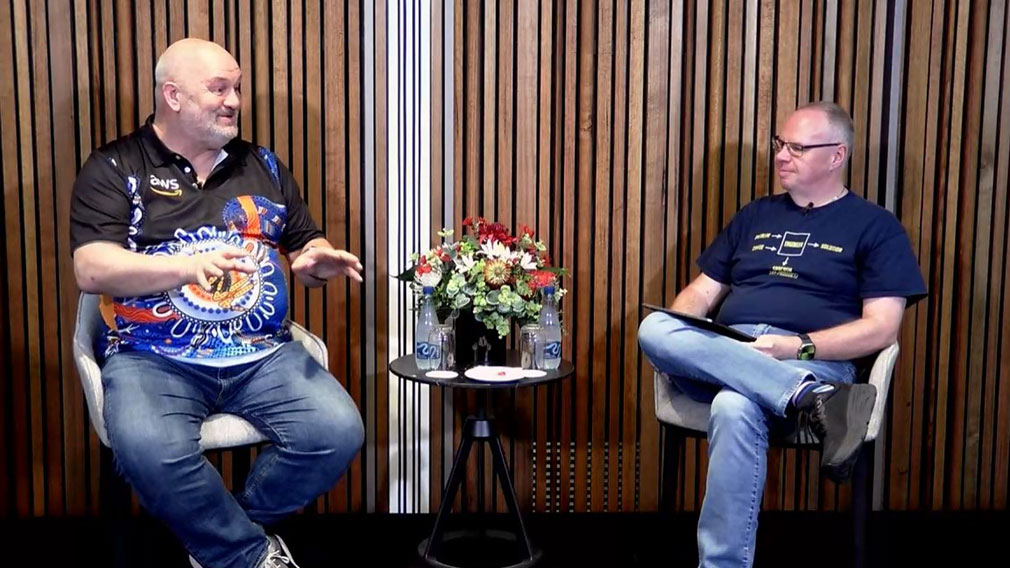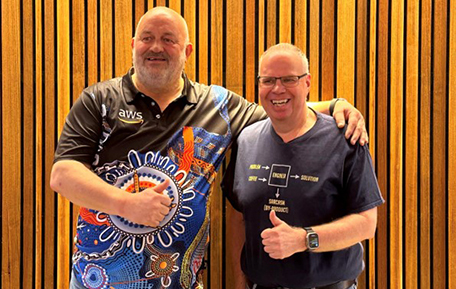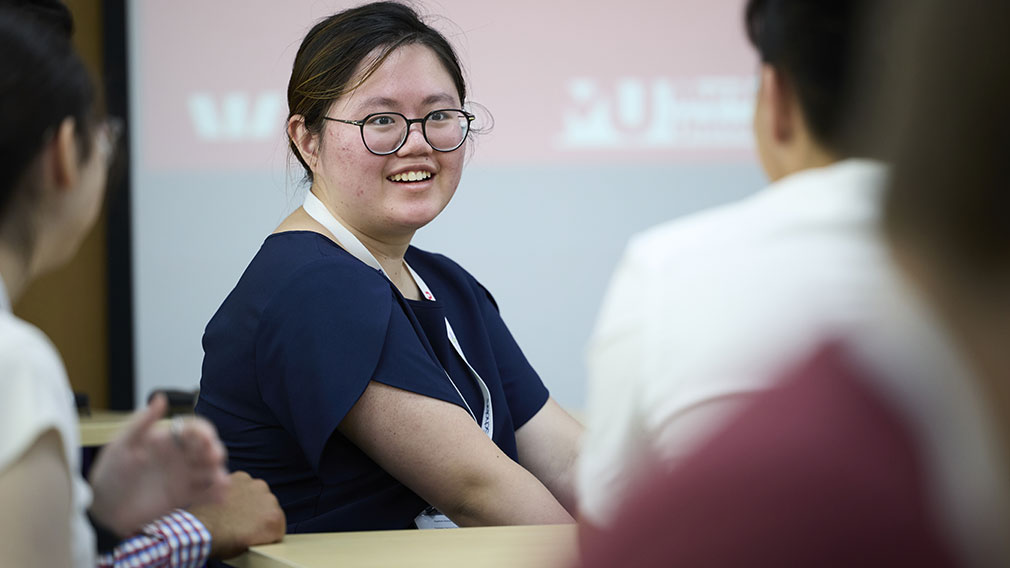The experimental culture behind Amazon’s success

Amazon.com's chief technology officer Dr. Werner Vogels (left) in conversation with Westpac Group CTO David Walker. (Kripa Krithivasan)
Jeff Bezos likes to call Amazon a “Day 1” company.
It’s a term he first used in a 1997 letter to shareholders which lays out his vision for an organisation which approaches every day as if it was its first. It’s characterised by a relentless focus on the customer, bold decision making, nimble organisational structures, and an experimental culture.
It was that emphasis on experimentation and innovation that gave Dr. Werner Vogels, Amazon.com’s chief technology officer, no hesitation in joining the company 18 years ago.
“Most of the things we were doing nobody had done before,” Vogels told Westpac Group’s chief technology officer David Walker in a fireside chat at the bank’s Sydney offices. “Any technology you could think of, Amazon was doing it at an unparalleled scale.”
These days, Vogels is channeling Amazon’s experimental culture to build what he calls “evolvable architecture.” It’s about building systems and infrastructure that can be adapted as technology, and customer needs, evolve.
“Evolvable architectures are crucial, especially if you start building things that nobody has ever built before,” Vogels said. “Thinking that you already know now what you may need two or three years from now is a bit presumptuous – it’s not reality.”
The key is keeping things simple: “Every complex system that works now, started off as a simple system that had to evolve,” said Vogels, who discovered his lifelong passion for technology while working as a radar and sonar operator on Dutch submarines during his military service.

Vogels and Walker share a belief in building technology that can evolve to meet changing business and consumer needs. (Supplied)
Westpac is deepening its relationship with Amazon Web Services (AWS) with a new 5-year agreement that will support expansion of the bank’s cloud capabilities.
“At Westpac, our standard, whether built by ourselves or sourced from others, is to be ‘built to change’ using ‘evergreen’ cloud-native technologies. In other words, an evolvable architecture,” Walker said.
“We need technology that is dynamic and flexible, so we can get new experiences, products and services to market faster than ever,” he added.
When large organisations think about digital transformation they should aim to be as fast as a startup, Vogels said, “so that you’re not being hampered by the internal structures or the history of the company.”
For banks, that means being agile enough to respond to the changing needs of their customers.
“In the past two years and even now, with all the inflation going on, people are anxious about their financial futures. ‘Can we build tools immediately to address that?’ It doesn’t need to be massive, but can we build something really quickly and bring it in front of customers,” Vogels said.
He puts Amazon’s success down to the company’s “build it, own it, run it” approach to technology, which empowers its engineers and software developers.
“Being responsible for the software that you build, because you also have to run it, gives you a lot more responsibility,” Vogels said. There are three things he wants every engineer to think about before they start building: the security of the system they’re developing; its operability and how easily it can be adapted; and what data and metrics they will compile to assess its performance.
Amazon’s method is to create small teams, focused on one particular problem. The emphasis is on experimentation, and a belief that you learn from your failures. If your career could be hampered by the failure of a project, you’re less likely to pull the plug on it, Vogels said, which is ultimately a waste of a company’s time and resources.
In terms of future tech trends, Vogels is excited by the potential of artificial intelligence and machine learning, especially in terms of the innovations he sees in sectors such as health care and transport.
But he’s yet to be convinced by the current breed of Generative AI, especially the chatbots that generate human-like conversational text based on user inputs.
“They are really good at writing articles and poems, but it’s not the truth that they generate. They’re not concerned about the truth at all,” Vogels said. “They are nowhere near at the point where I would put my trust in them.”
Vogels and Walker describe a strong partnership between Amazon and Westpac, one that will create evolvable technology to help customers and employees, well into the future.
For a deeper dive, check out Werner Vogel’s Distributed Computing Manifesto on his personal blog.



